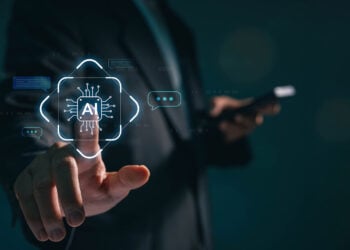The world today is facilitated by technology and driven by data and innovation. To remain relevant, the legal industry has begun embracing technological advancement. Various legal technologies, broadly categorized as legal tech, have aimed to tackle a variety of challenges within the legal world that all seek to address the longstanding misalignment of legal service consumers and legal service providers. However, the increased role of technology within the practice of law illuminated a new challenge and one that is endemic to any technological solution. The technology itself is not enough. In other words, the real benefit of a technology comes not from its mere existence, but from its use by users and its integration into a business process or workflow.
An ecosystem is a dynamic and intricate system, typically of living organisms where living organisms interact with each other and their physical environment. This interplay creates a web of relationships where each organism plays a specific role and contributes to the overall health and balance of the system. At the heart of an ecosystem lies the concept of interdependence.
In the world of legal tech, this concept of interdependence plays a critical role. Technology relies on users to use it and business processes depend on technologies being used to work effectively. The people, the processes, the technologies all depend upon one another and their interactions in turn impact one another. This is why I describe legal tech as an ecosystem and why I have long viewed legal tech as about much more than just technology.
Leaders in the legal industry should focus on educating all stakeholders – from attorneys to clients – on how to fully leverage legal tech in impactful ways. A cultural shift toward embracing innovation and technology must take place across the board.
Additionally, greater collaboration is needed between legal tech companies, law firms, corporate legal departments, and bar associations. Platforms that connect various legal tech tools into holistic operating systems could also streamline workflows.
Technology-enabled transformation of legal service delivery is inevitable and underway as I write these words. Many tactical legal tasks like contract review, case law research, and document drafting are now automated/can be automated by artificial intelligence. Legal providers now are more than just law firms. Companies now offer a range of legal services from consulting to technology implementation. Others offer more specific services like workflow automation, IP management, and patent drafting.
When we consider the continuous evolution of the intricate legal tech ecosystem previously described, several implications emerge surrounding new roles, required skills, and educational shifts. One is something all ecosystems encounter as they thrive and grow – new members becoming a part of it. Consider the myriad new roles that now exist in the legal industry. Examples include legal operations professionals to data analysts and analytics professionals.
These roles and many more are not mere facilitators of technology; rather, they are active participants in its development, ensuring that it aligns with the intricate requirements of legal practice. The interweaving of technology into law has necessitated a parallel transformation in legal education.
Progressive law schools are now incorporating tech-focused curricula, recognizing the importance of producing graduates who are as adept with algorithms as they are with case law. Similarly, for the seasoned practitioner, professional development increasingly mandates technological proficiency alongside legal expertise.
Legal educators, particularly law schools, must now actively respond to the growing imperative for technological proficiency in law practice by creating robust programs and recruiting experts to teach the necessary skills. They must equip students with a deep understanding and hands-on experience in the latest digital tools that are transforming the legal landscape. Educators need to commit to training students not just in the current technology but also in the critical thinking required to adapt to new digital advancements.
Future lawyers must be prepared to make informed decisions about using technology to serve clients efficiently, enhance legal procedures, and interact with an increasingly digital justice system. This growing need for an evolution in legal education underscores a needed and deliberate shift toward recognizing technology as an integral element of modern legal practice.
As we proceed integrating technologies including artificial intelligence, we confront pivotal questions: How do we protect data from misuse and from being stolen? How do we ensure that technologies are used to help and protect the public and not to hurt the public?
The stakes are particularly high.
The imperative for robust and yet flexible protocols to both ensure innovation while also ensuring the safety of innovative endeavors is accentuated as our world becomes ever more interconnected digitally. Ultimately, the way forward for each of us is adaptation, experimentation, and learning. Understanding the legal tech ecosystem, as with understanding any ecosystem, starts by recognizing that the actions of one can have far-reaching impacts upon the many.











